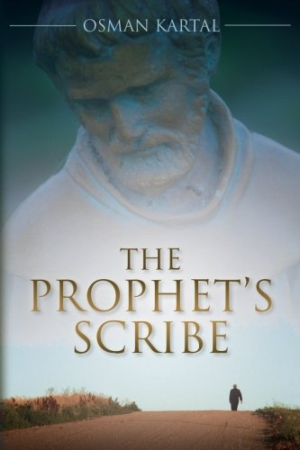The Prophet's Scribe
Sex and religion make for a volatile, controversial, and uncomfortable mix, especially when the former pops up in long, lurid, and lascivious passages in a historical novel about the latter. That Mohammad, the founder of Islam, could have been “well-endowed” or that “his appetite for women was extraordinary” may be historically accurate, but these and other titillating tidbits of information are likely to bring discomfort to—or even offend—many readers who pick up The Prophet’s Scribe by Osman Kartal.
Kartal writes well, and most of the story is entertaining. The book is rife with passages in which key characters engage in graphic sex, and there are numerous battles to help liven up the theological goings-on, which are themselves presented clearly and succinctly. The struggles and divisions among various sects of the early Christian church are well presented, and there is a lot of solid, albeit condensed, church history in this book.
The same can be said of how Kartal describes the rise of Islam. The role played by his title character, Sergius, a Nestorian Christian monk, in the crafting of Islam and its key tenets will come as a revelation to all but the most scholarly students of the religion. Others, especially Muslims, may be doubtful, offended, or even angry at the author for his less-than reverential depictions of The Prophet.
Kartal does not appear to be intentionally writing to offend, nor does he seem to have any mean-spirited, derogatory, or hidden agenda. He claims to be striving for accuracy in portraying both Mohammad and the monk as flawed, but very real, people. To support his writing, Kartal cites many sources, including those contemporary or near-contemporary to the period (late sixth and early seventh centuries AD, or the first century of the Islamic calendar, which dates from the founding of Islam). The author’s colorful descriptions of life in Rome, Byzantium, Mecca, and Medina also appear well-researched.
Kartal successfully brings his characters and situations to life, but, especially in the first half of the book, the graphic sexual encounters may seem gratuitous to some readers. Sex scenes do pop up frequently in many historical novels, even those with priests and popes and prophets. To use them as a device to liven up a story about the iconic founder of one of the world’s great religions is another matter—and not just one of taste, but of sense. At the very least, Kartal should include a clear label on his book to alert readers who may be expecting a far less lurid version of how a Nestorian Christian monk and a merchant from Medina came together to form a major religion.
Reviewed by
Mark G. McLaughlin
Disclosure: This article is not an endorsement, but a review. The publisher of this book provided free copies of the book and paid a small fee to have their book reviewed by a professional reviewer. Foreword Reviews and Clarion Reviews make no guarantee that the publisher will receive a positive review. Foreword Magazine, Inc. is disclosing this in accordance with the Federal Trade Commission’s 16 CFR, Part 255.

